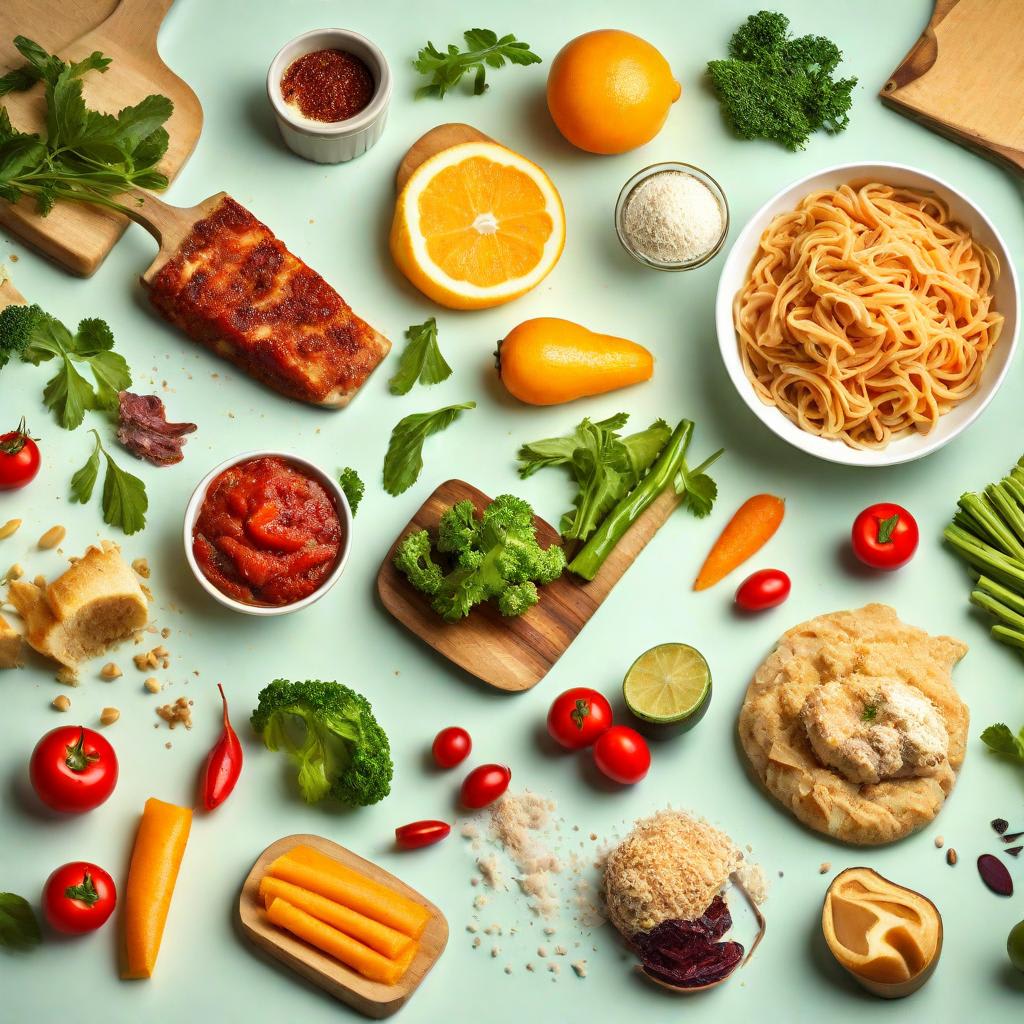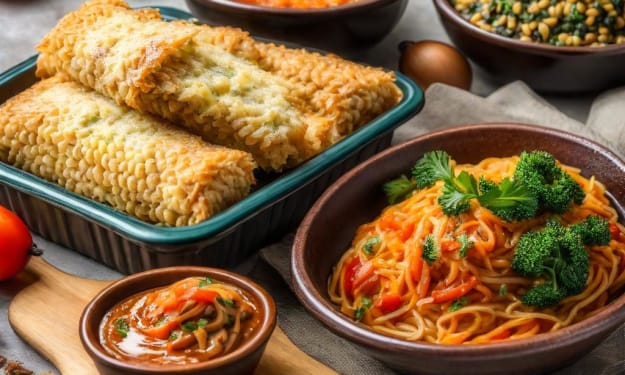Mango Kesari,Sakkarai Kozhukattai , Kalkandu Pongal,Aval kesari,alambali or Kongunaadu style rice
food recipes indian

Mango Kesari is a delicious and popular South Indian dessert made with semolina, sugar, ghee, and ripe mango puree. Here is a simple recipe for Mango Kesari:
Ingredients:
1 cup semolina (rava/sooji)
1 cup mango puree
1 cup sugar
4 tbsp ghee
2 cups water
1 tsp cardamom powder
Few strands of saffron (optional)
Chopped nuts for garnish (cashews, almonds, and pistachios)
Instructions:
Heat a heavy-bottomed pan and add the semolina. Dry roast the semolina until it turns golden brown and gives a nutty aroma.
In another pan, heat 2 cups of water and bring it to a boil. Add the mango puree to the water and mix well. Keep it aside.
Add the hot mango-water mixture to the roasted semolina and mix well. Be careful as the mixture may splutter.
Cook the mixture on medium heat until the semolina absorbs all the liquid and turns soft.
Add sugar to the mixture and mix well. Continue cooking until the sugar dissolves and the mixture thickens.
Add ghee, cardamom powder, and saffron strands (if using) to the mixture and mix well.
Cook for another 5 minutes until the mixture leaves the sides of the pan.
Garnish with chopped nuts and serve hot.
Enjoy your delicious Mango Kesari!
Kalkandu Pongal, also known as Sugar Candy Pongal, is a traditional South Indian sweet dish made with rice, moong dal, milk, sugar candy, and flavored with cardamom and ghee.
Here's a recipe for Kalkandu Pongal:
Ingredients:
1 cup raw rice
1/2 cup moong dal
1 1/2 cups milk
1 1/2 cups water
1 1/2 cups sugar candy (kalkandu)
1/2 tsp cardamom powder
2 tbsp ghee
A handful of cashews and raisins
Instructions:
Wash the rice and dal together and pressure cook with milk and water until well cooked and mushy.
Heat ghee in a pan and fry cashews and raisins until golden brown. Keep them aside.
In the same pan, add the cooked rice-dal mixture and sugar candy.
Mix well and let the sugar candy dissolve completely.
Add cardamom powder and fried cashews and raisins. Mix well.
Cook for a few more minutes until the mixture becomes thick and pudding-like.
Serve hot and enjoy the delicious Kalkandu Pongal!
Sakkarai Kozhukattai is a traditional South Indian sweet dish made during the festival of Ganesh Chaturthi. It is a sweet dumpling made of rice flour, jaggery, grated coconut, and cardamom powder. The dumplings are steamed and then served hot or at room temperature.
To make Sakkarai Kozhukattai, follow these steps:
Ingredients:
1 cup rice flour
1 cup water
1/4 tsp salt
1 cup jaggery, grated
1/2 cup grated coconut
1/4 tsp cardamom powder
1 tbsp ghee
Instructions:
In a pan, boil 1 cup water and add 1 tbsp ghee and 1/4 tsp salt.
Once the water comes to a rolling boil, add 1 cup rice flour and stir continuously until the dough comes together.
Remove from heat and let the dough cool for a few minutes.
Knead the dough until smooth and divide it into small portions.
Flatten each portion into a small disc and fill it with a mixture of grated jaggery, grated coconut, and cardamom powder.
Bring the edges of the disc together and seal it by pinching the edges together to form a dumpling shape.
Repeat the process until all the dough and filling is used up.
Steam the dumplings in a steamer basket for 10-12 minutes.
Serve hot or at room temperature.
Enjoy your delicious Sakkarai Kozhukattai!
Aval kesari is a sweet dish from the South Indian cuisine, which is made using flattened rice (aval), sugar, ghee, and flavored with cardamom and saffron.
Here's a recipe for Aval Kesari:
Ingredients:
1 cup flattened rice (aval/poha)
1 cup sugar
1/4 cup ghee
1/4 tsp cardamom powder
a few strands of saffron
2 cups water
Instructions:
Rinse the flattened rice in water, then drain and keep aside.
In a pan, heat ghee and add the drained flattened rice. Roast it on low heat for about 5-7 minutes, until it turns light golden in color and crisp.
Add 2 cups of water to the pan and cook the flattened rice for 2-3 minutes, stirring continuously.
Add sugar and mix well until it dissolves completely.
Add saffron strands and cardamom powder, and stir well.
Cook for another 3-4 minutes until the mixture thickens and the ghee separates from the sides of the pan.
Remove from heat and serve hot. Garnish with some chopped nuts if desired.
Enjoy your delicious Aval Kesari!
alambali or Kongunaadu style rice pudding is a traditional South Indian dessert that is usually made during festivals and special occasions. Here is a recipe for Palambali/Kongunaadu style rice pudding:
Ingredients:
1 cup raw rice
1 cup jaggery
1 cup milk
1 cup water
2 tbsp ghee
1 tsp cardamom powder
A pinch of salt
Cashews and raisins for garnishing
Instructions:
Wash the rice thoroughly and soak it in water for about 30 minutes.
In a pressure cooker, add the soaked rice, water, and milk. Close the lid and cook for 3-4 whistles.
Once the pressure releases, open the cooker and mash the cooked rice with a ladle or spoon.
In a separate pan, melt the jaggery with a little water until it dissolves completely.
Add the melted jaggery to the mashed rice and mix well. Cook on medium heat for about 5-7 minutes, stirring occasionally.
Add ghee, cardamom powder, and a pinch of salt to the mixture and continue cooking for another 2-3 minutes.
Remove from heat and garnish with cashews and raisins.
Serve the Palambali/Kongunaadu style rice pudding hot or cold as per your preference.
Enjoy the rich and delicious South Indian dessert with your loved ones!





Comments
There are no comments for this story
Be the first to respond and start the conversation.